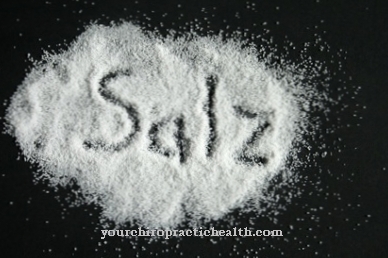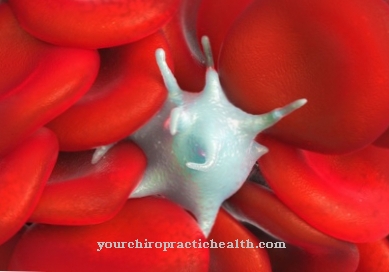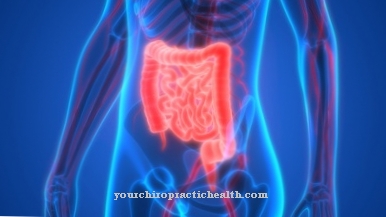Vascular resistance is the resistance that a blood vessel opposes to the blood. The word "corona" means crown or wreath and describes the coronary vessels in medical terminology. Since the blood circulation extends over the entire body and thus there is also vascular resistance in all blood vessels, the designation is used to localize the special vascular resistance of the coronary vessels coronary vascular resistance used.
What is Coronary Vascular Resistance?

Vascular resistances or flow resistances are antagonists to blood pressure and are present in all blood vessels. All arteries and veins are called blood vessels.
Coronary vascular resistance specifically deals with the flow resistances of the arteries and veins of the heart.
As an opponent of blood pressure, the flow resistance plays an important role in maintaining the metabolism.
Function & task
The flow resistance slows the blood flow. The absorption of nutrients, oxygen, etc. from the blood into the cells is much better when the blood flow is slow. The body makes use of this mechanism to ensure optimal nutrient absorption.
The flow resistance serves not only to maintain a healthy blood circulation but also to absorb the transported nutrients.
Illnesses & ailments
Atherosclerosis is the deposition of cholesterol, connective tissue, fats, thrombi and calcium phosphate in the vessel walls of the arteries and veins. Atherosclerosis is also called hardening of the arteries in German. An accumulation of lime, i.e. calcium carbonate, is not present in atherosclerosis. Atherosclerosis can manifest itself in all blood vessels in the body. In atherosclerosis, progressive degeneration of the arterial walls takes place over long periods of time.
Other circumstances such as connective tissue overgrowth and the accumulation of collagen and proteoglycans thicken and harden the vessel walls. The thickening and lack of elasticity in the vascular walls inhibit blood circulation. The possible formation of blood clots also represents a considerable danger to the organism.
The pathological deposit in the vessel walls is called a stenosis. The restricted function of the affected arteries or veins prevents constant blood flow and numerous serious diseases can occur.
There is also the possibility that parts of the deposit split off and blood clots form. These in turn can, like a plug, override blood vessels or valve mechanisms. Atherosclerosis in the coronary arteries is called coronary sclerosis and the actual deposit in the walls of the coronary arteries is called coronary stenosis.
Coronary stenosis inhibits the flow of blood from the arteries to the heart muscles, thereby preventing an effective supply of oxygen. The imbalance between oxygen demand and oxygen supply is called coronary insufficiency.
An imbalance in the supply and demand for oxygen is also known as ischemia. While ischemia is a general term for poor blood flow to an organ, coronary insufficiency specifically describes ischemia of the heart muscles.
The ischemia of the heart muscles is consequently referred to as ischemic heart disease or also as coronary heart disease (CHD). Coronary artery disease is caused by coronary stenosis. The typical main symptom of CHD is angina pectoris. Angina pectoris is defined by a strong feeling of pressure and dull, constricting pain behind the breastbone and in the heart area. It is triggered by an excessive imbalance between oxygen supply and oxygen demand in the heart muscle. The resulting pathological oxygen deficiency is often triggered by environmental factors such as excessive stress in combination with coronary artery disease.
Angina pectoris can also be triggered by other emotional states or secondary environmental conditions such as cold or heat. Overeating or inadequate physical activity can also lead to an increased need for oxygen and thus trigger angina pectoris.
Heart attack, or myocardial infarction, occurs when a blood clot splits off from the coronary stenosis. After splitting off, the blood clot clogs a coronary artery, thereby stopping the supply of oxygen from the affected artery to the affected heart muscle. The severity of the heart attack depends on the size of the blood clot that has split off and the length of time the arteries are blocked.



























